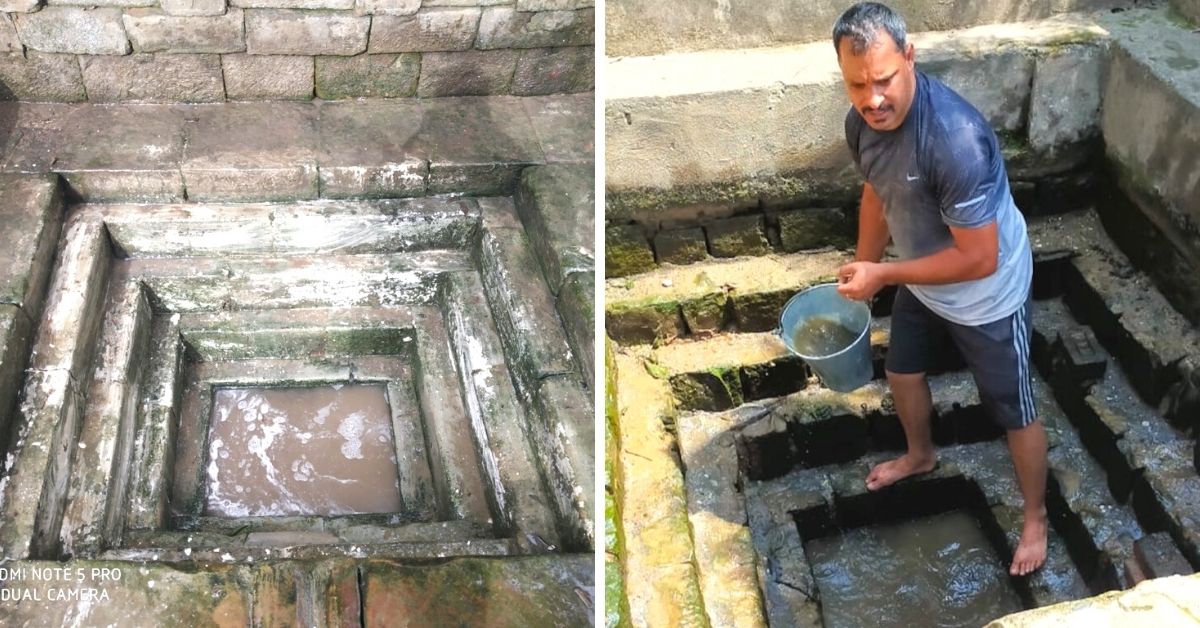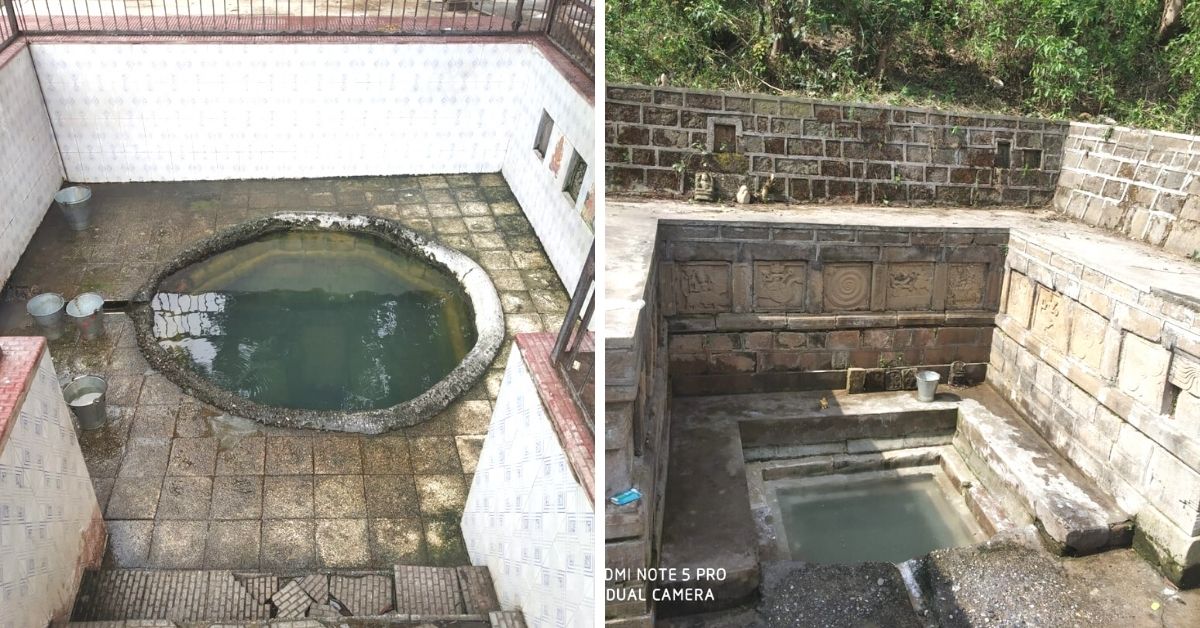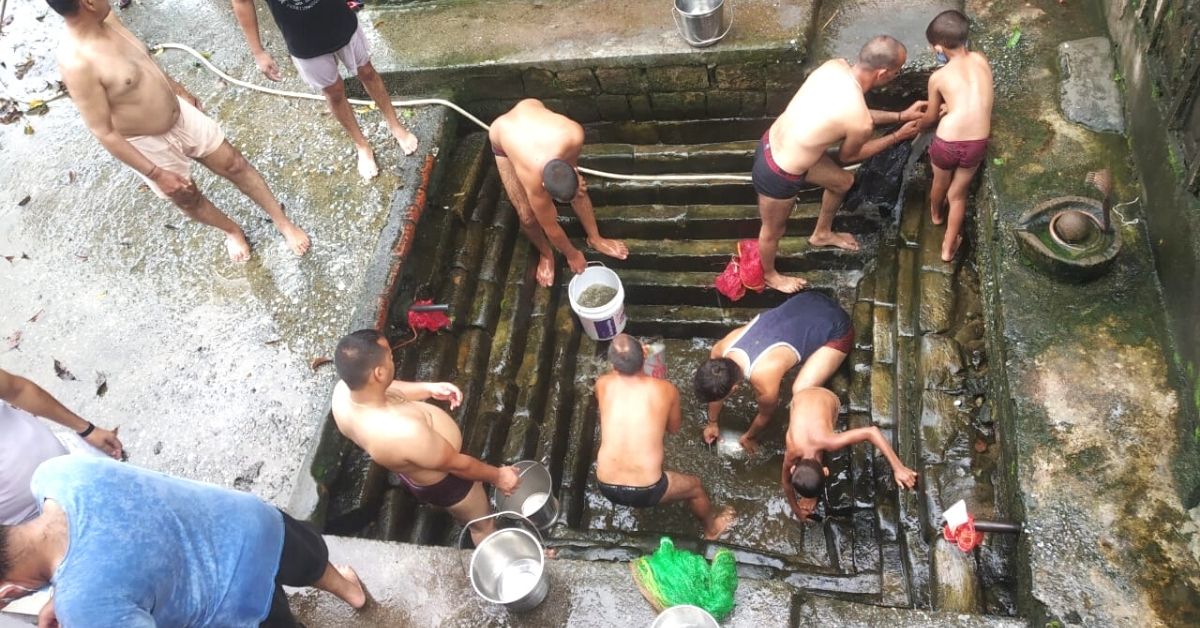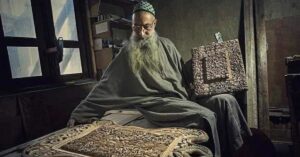Citizens Revive 65 Stepwells in Just 4 Months, Refuse To Let Their Culture Die
Dr Vijay Atri and locals of Udhampur district, Jammu & Kashmir started the Bowli Bachao Abhiyan in March 2021 to revive 20 natural spring water sources. They went on to inspire 13 others to follow suit

Udhampur, about a 70 km drive towards North-East of Jammu, is famous for its tourism spots. However, the town is also popularly addressed as the Land of ‘Bowlis’ — a natural groundwater reservoir for locals filled by natural springs in the region, also known as ‘stepwells’.
For generations, the bowlis came to be used for drinking and domestic purposes. They often have religious and cultural sentiments attached to them, but in recent years, their importance has started diminishing.
“Earlier, the residents depended heavily on bowlis; however, the water pipeline was introduced in 2007 at every household, and the connection between the locals and the natural water source started thinning,” says Ramesh Kumar, one of the residents of Suki Karlai village of Udhampur.
Ramesh says their village was once surrounded by thousands of bowlis, which have now reduced to a few hundred. In early 2021, a group of locals were reminiscing and realised that many known bowlis were buried under road widening, constructions, accumulation of waste and other human factors.
The conversation evolved to the extent that citizens took it upon themselves to identify and revive the stepwells. To date, they have revived over 20 bowlis in Udhampur and inspired 13 villages and other parts of the district to rejuvenate these traditional old water sources.
Rise of The ‘Water Warriors’

Dr Vijay Atri, serving at the department of horticulture planning and marketing with the J&K Government, says that in February 2021, he discussed the issue of the stepwells with his friends and neighbours.
“There were many social media posts about disappearing bowlis and losing them for multiple reasons. Bowlis are a part of our culture and have remained an integral part of our lives. So, we decided to revive them,” he says, adding that their survey helped identify around 50 such water sources in the town.
The 38-year-old, along with the block programme manager with Jammu and Kashmir State Rural Livelihood Mission (JKSRLM) — Naresh Kumar, Deepak Kumar and Keshav Sharma, decided to clean and revive the natural water sources every Sunday.
Armed with gloves, scrubbers and gardening tools such as spades and sickles, the group targeted the dead Garne Aali Bowliyan on 20 March. Within hours, the water source was cleaned, thus marking the beginning of Bowli Bachao Abhiyan (Save the Stepwells Mission).
The group posted their work on social media and people started appreciating their contribution. As they moved on to other bowlis, the locals started volunteering and joining their cause. The work soon came under the notice of district collector Indu Kanwal Chib, who tweeted appreciating their efforts and calling them “Water warriors”.
The tweet influenced residents across the district, motivating them to rejuvenate the springs around them. “Residents in other areas such as Nallah Ghouran, Basi, Ramnagar, Tikri, Devika river, Battal Balliyan, Londana and others started working to revive around 45 bowlis.

Indu Kanwal Chib says that after noticing the work of the locals, the officials were instructed to identify stepwells across the district. “We have identified and geotagged 877 bowlis so far. A comprehensive plan is already in place for their revival and conservation,” she says.
Indu adds that the identified water bodies will be conserved with the help of experts who will study the geology and sources of the springs. “The blatant use of concrete often chokes the springs leading to drying up of these sources. So, the administration has adopted a scientific approach towards their protection and revival,” she says.
The officer says the experts will also train the masons to follow the same practice. “The administration is also looking for sponsorship and launching an ‘Ek bowli mere naam’ campaign, where citizens can adopt the stepwells. The office will have control over the structure and offer guidance for its upkeep and maintenance,” she explains.
She adds that the office will display a ‘bowli map’ on its official website for reference and develop a tour around a cluster of bowlis for tourism.
Indu says that the bowlis are a reliable source of water for the locals in the future. “The district administration has spent about Rs 7-8 lakh on water tankers. The locals heavily extract water from hand pumps. Moreover, the water tankers or the pipeline do not reach remote areas. Using groundwater sources puts stress on the depleting water quantity, which is being extracted at a faster rate,” she adds.
Indu says that rejuvenating bowlis will help reduce the stress on groundwater sources and meet the water needs of the residents. “The comprehensive plan will soon become incorporated as a part of the government’s flagship programme — Jal Shakti Abhiyan. It focuses on water conservation and bringing water security to states across India,” she says.

Daleep Kumar, one of the volunteers, says, “I recently studied civil engineering in Punjab and lived in Kashmir. I did not see any bowlis there. It is a unique asset for locals. This motivated me to join the cause.” He adds that after the revival of bowlis, the team revisits them every alternate month to ensure their maintenance. Daleep says that for now, the volunteers bear the expenses for the rejuvenation work.
Speaking about how the movement picked up pace in a short time, he shares. “The locals willingly work for the cause because of their attachments towards the bowlis. The water from these sources is odour free, clean and easy to digest. Moreover, the water is cool during summers and warm during the winter months,” he adds.
As more bowlis are rejuvenated, Daleep and other volunteers hope for financial support through Corporate Social Responsibility (CSR), crowdfunding, local body and district administration to maintain them.
Dr Vijay urges that the concept of bowlis must stay alive as the locals connect it with every aspect of their lives. “Be it festivals or religious occasions, these natural water sources are integrated with life events and even the death of a person. People often socialise around bowlis. By reviving them we are helping residents reconnect with their forgotten culture,” he adds.
Edited by Yoshita Rao
This story made me
- 97
- 121
- 89
- 167
Tell Us More
We bring stories straight from the heart of India, to inspire millions and create a wave of impact. Our positive movement is growing bigger everyday, and we would love for you to join it.
Please contribute whatever you can, every little penny helps our team in bringing you more stories that support dreams and spread hope.



















